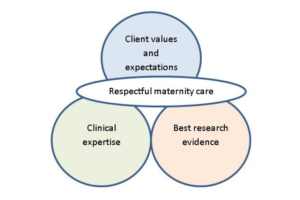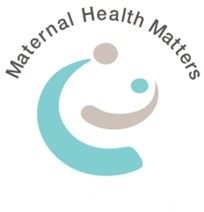Our call out to government – Respectful Maternity Care for all women

Deep-seated resistance to addressing systemic disrespect for pregnant women in our health system is thwarting progress towards improving the health and wellbeing of all Australians.
Women feeling disrespected during maternity care is an endemic phenomenon. The mistreatment is a longstanding and complex problem that is a form of sex-based discrimination and violence against childbearing women. The World Health Organization (WHO) notes that this is a worldwide issue of concern and recommends that clinical and psychological safety for pregnant women and mothers needs to be incorporated in the provision of care to increase women’s chances of receiving respectful maternity care and experiencing positive pregnancy and birth (WH0, 2018).
Unfortunately, there is still a huge gap between the maternity care a pregnant woman should receive and what she experiences. Current maternity care provides less than optimal care to the childbearing women of Australia by not protecting their basic human rights thereby creating economic & social inequities for women.
Our recommendations to achieve safe, respectful maternity care include:
- Protecting the future health of Australians. Getting it right during pregnancy, birth and in the postnatal period reduces downstream expenditure on remedial care for post-natal depression, pelvic floor damage, prematurity and reduces downstream expenditure on remedial care for post-natal depression, pelvic floor damage, prematurity and later life poor health for both the mother and infant.
- Protecting human rights. Ensure all women receive maternity care that protects their human rights. Enshrine in in health professional curricula, education on human rights, gender equity, respectful maternity care and working in partnership with pregnant women. Include assessing implementation of Respectful Maternity Care in health service accreditation linked to the standard Partnering with Consumers and communicating for safety..
- Embeding Respectful Maternity Care in Policy. Use Woman-centred care; Strategic directions for Australian maternity services to assist in policy development, monitoring and reporting on issues relating to the human rights of women receiving maternity care.
- Addressing the needs of disadvantaged and vulnerable women. There is currently an unequal distribution of maternal health care resources among population groups; with those who are financially, ethnically and geographically marginalised experiencing the greatest disadvantages. First Nations women benefit from ‘Birthing in our Country’ Indigenous-led birthing programs, while those from CALD backgrounds benefit from culturally appropriate care.
- Providing reliable information on maternity care options. Make available information about birthing options and the outcomes of each choice. Consumers report that they frequently had little knowledge about care options such as publicly funded midwifery-led care, due to the restrictive trade practices of some medical practitioners.
- Evidenced Informed Care – Midwifery led continuity of care. With the overwhelming evidence that midwifery continuity of care by a known midwife results in optimal outcomes for a woman and baby, and results in outstanding clinical, financial and consumer satisfaction outcomes that benefit families and the community, there needs to be a target of 50% of women of women receiving this care by 2025 and 100% of women receiving this care by 2030.
- Enhancing Governance and Accountability. The maternity system needs strong governance. Ineffective governance and weak regulation of maternity services must end to achieve respectful, quality maternity care. Data holds the key to reform and good governance. Aggregated trended data can be deceptive and therefore not useful, therefore as an initial focus, report all data by parity. When reporting data, report by clinician outcomes, place of birth outcomes, both public and private maternity services, as well as reporting Women Reported Experience Measure and Women Reported Outcome Measures.
- Financing mechanisms and bundled payments. Focusing expenditure on evidence-based initiatives can reduce incidence and prevalence of harm and chronic disease for women. The return on investment for a wellness, primary health approach is consistently greater than costly remedial/intervention responses of chronic illness. Extending Medicare funding to midwives as primary maternity care providers is crucial to improving access to evidence-based maternal health care. Despite midwifery continuity of care models costing less and having better outcomes for both mothers and their babies, the current financing mechanisms actively restrict access to this option and contribute to the effective restriction on affordable maternity care.
- Consumer voice. Finally, and most importantly, a maternity service should be run in the interests of the public. Unfortunately, any worthwhile reforms of our health sector to benefit the public are usually vetoed by lobby groups and unions with their special interests and/or managing their personal risk. To mitigate this impact, when in government, please have the health minister meet with consumers before they meet with clinicians, unions, lobby groups and health services. This will ensure the Minister is briefed by and hopefully influenced by those impacted by maternity services.
